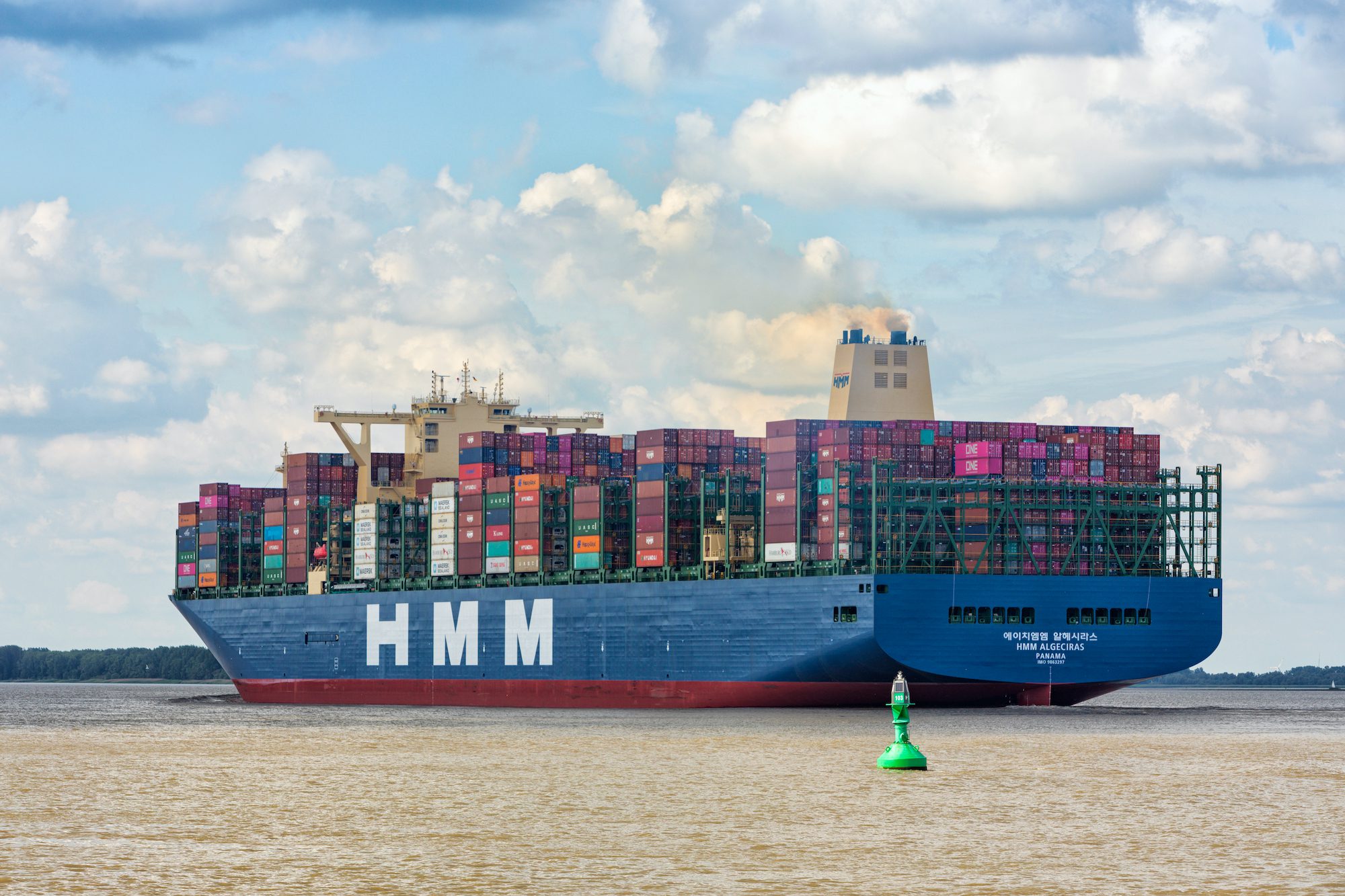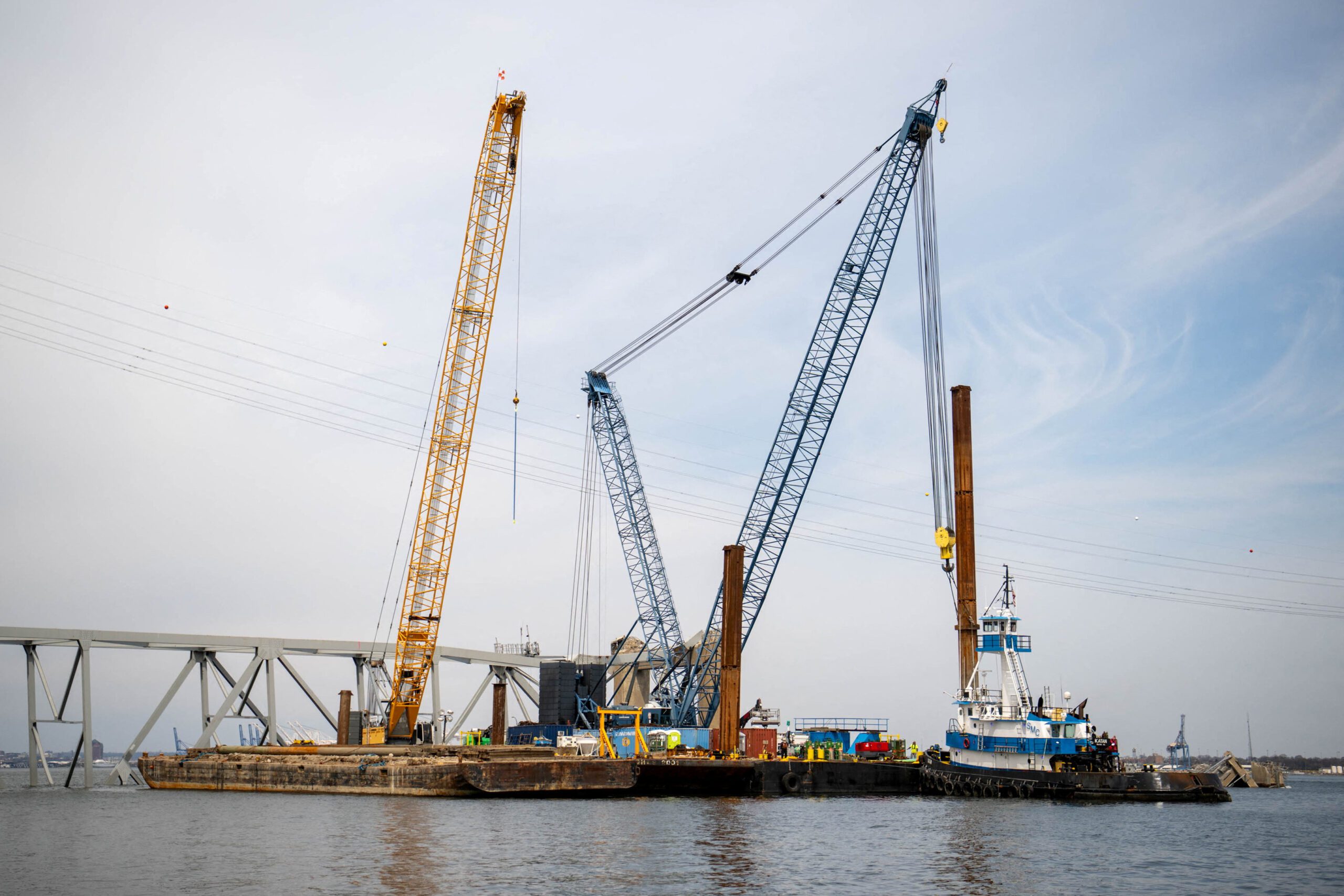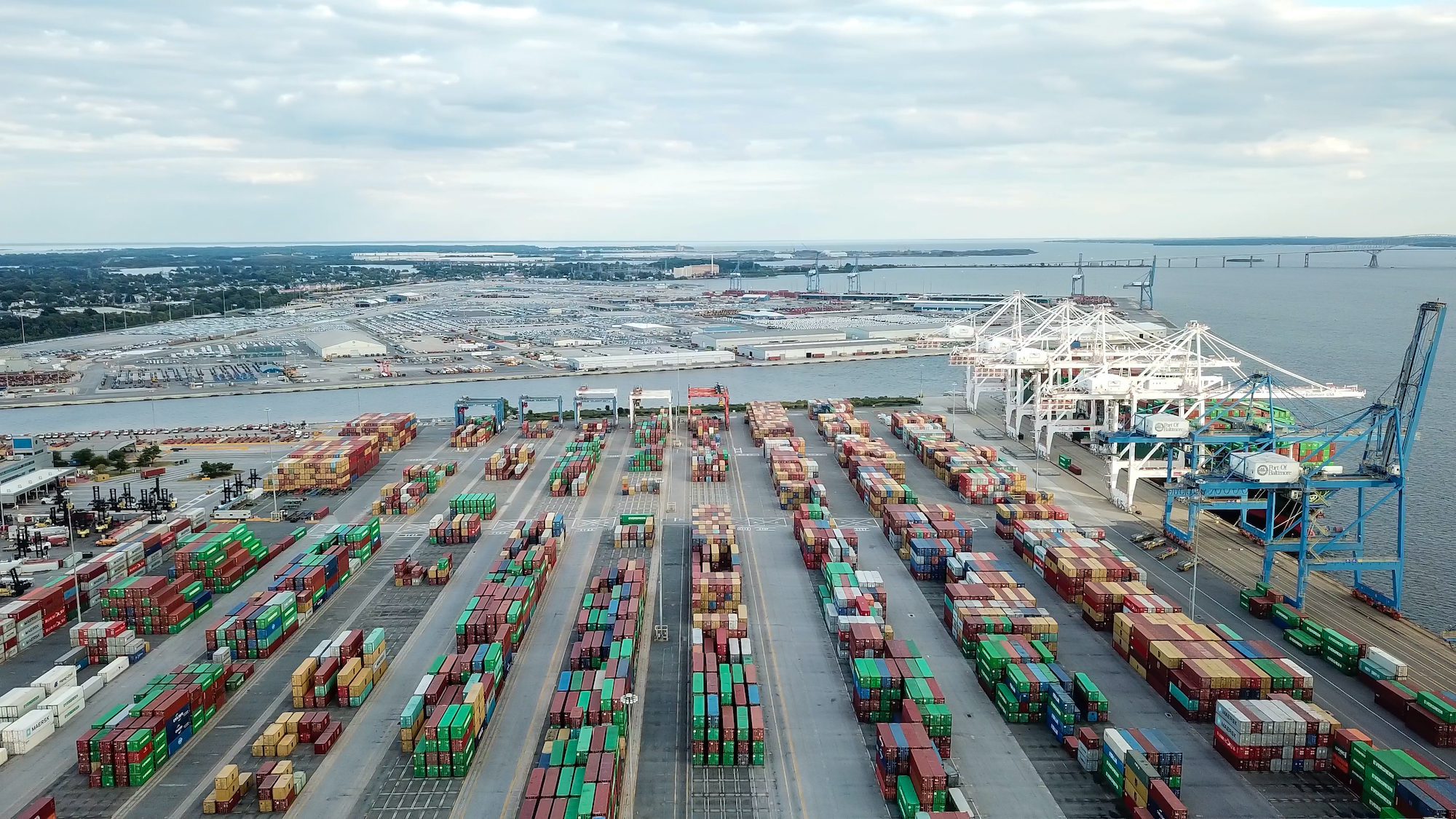SSEADIS: Short Sea Distribution
by Captain John Konrad (gCaptain) A perfect storm of new challenges and spiraling cost for truck drivers in New York City has resulted in a tsunami of political support for Short Sea Shipping (SSS) initiatives to move cargo off trucks and onto local waterways. In just the past six months government officials in New York have pledged highly valuable waterfront land, over $40M in grant money and permits to any company that can make SSS work. But can a solution be found?
Industry stalwarts like 150 year old McAllister Towing, Harley Marine Services, Red Hook Terminals and Weeks Marine believe that new economic pressure on trucking and government grant money will soon make small container-based barge services profitable but new, innovative, maritime startups are emerging with new ideas.
Three new companies – gShip, Blue Line Logistics and Harbor Harvest – are sprinting to meet grant deadlines and sign-up customers and they share one important trait, all three will move freight without containers, rather, they will focus on a much smaller standardized unit; shipping pallets.
To understand the new opportunities in New York we first need to answer two fundemental questions:
Why is the cost of trucking in New York escalating at such a rapid rate?
Why are the newest, smallest and most innovative short sea shipping companies not using shipping containers?
City Congestion – The Perfect Storm
Our nations highways are at a critical stage. Containerized shipping, extremely efficient at moving cargo across oceans, onto trucks, and over our nations interstates, has pushed our roadways to maximum capacity. Congestion at critical bottlenecks has reached a breaking point, especially in cities. Large trucks do not move well through local streets. They sit all day in traffic, delaying deliveries, polluting the atmosphere and getting into accidents.
Pollution and accidents come with high costs too. New emissions requirements coupled with electronic safety devices and driver monitoring have doubled the cost of purchasing a truck. Drivers can no longer get away with illegal overtime exacerbating a nationwide driver shortage.
New roads can not be built because transportation budgets are already strained repairing existing infrastructure, repairs that are compounding the problem with road closures throughout the transportation network. In 2018 congestion costs topped $4.9 Billion in the NY/NJ metro area. A demographic shift to urban areas, and an increase in online shopping mean these problems will only get worse.
There is, however, a catch. Not all of our nations highways are congested and many highways, especially those moving long distances East and West, experience little traffic. The most critical problem areas are for trucks moving in and around cities or through traffic choke points like New York’s George Washington bridge. Moving cargo short distances around these choke points could solve the problem but container handling time and slow tug speeds make short moves less effective.
Regulations
“Five years ago government regulations made short sea shipping difficult in New York” said Andrew Genn – NYCEDC SVP of Ports & Transportation – at a SSS conference last year. “We are now working to support rather than block SSS activity.”
Local (e.g NYC DOT), State (e.g. The SUNY Research Foundation) and Federal (e.g. MARAD) are working together to fund research and help incubate new ideas in the SSS space. New York City leadership has joined-up with vocal short sea shipping advocates – like Capt. Eric Johansson and Dr. Shmuel Yahaloms at SUNY Maritime College and Dr. Chang Guan of Kings Point, Ryan White of the NYCEDC – and corporate leaders – like Mike Stamatis of Red Hook Terminals and Bob Kunkel of Harbor Harvest – to form a new North American Marine Highway Alliance.
Even large, historically reactive organizations, are pitching in to help solve the problem. During the recent CMA Shipping conference in Stamford Connecticut both Bethann Rooney, Deputy Director of the Port Authority of NY/NJ, and Rear Admiral John Nadeau Assistant Commandant for Prevention Policy, spoke of their commitment to remove obstacles to short sea shipping in New York.
For the first time in decades government is aligned in support of short sea shipping.
New Solutions Are Needed
“We are in critical need of new thinking.” said US Maritime Administrator Rear Admiral Mark Buzby during a recent industry event. “Traffic in our cities has reached a breaking point and DOT projections show the problem is about to get much worse.”
Silicon valley venture capitalists, responding with their typical pie-in-the-sky solutions, are investing hundreds of millions into drones, scooters and subterranean tunnels to combat traffic but none of these solutions can handle the size and weight of palletized cargo that trucks carry. The solution, however, is simple. If we return cargo to the harbors, rivers, and canals – the same waterways that most major cities where built around – then we can move it cheaply and effectively in and around the city.
This solution – known as short sea shipping – meets all the criteria that are needed to solve these problems but, it has one major problem of it’s own. It has failed. Repeatedly. We do an excellent job of moving liquid and bulk cargo via water but, when it comes to moving shipping containers inland, we fail. The question is why?
The Problem With Containers
“To fix the problem we need to think outside the box. Literally.” says one cofounder of gShips. “The very reasons why shipping containers have been so successful for moving cargo across harsh oceans are also the reasons they fail on inland waterways.”
Shipping containers are big, and heavy and overbuilt to survive the harsh conditions at sea but most of our inland waterways are well protected and both size and weight come at a cost. Big heavy boxes require big strong cranes and big strong ships or tugs. They also take up a lot of space.
Waterfront Real Estate
Large shipping containers require large plots of land. Huge gantry cranes take up considerable space as do equipment to sort and stack the containers. Truck chassis need to be stored somewhere and empty containers need to be kept on hand.
According to the United Nations the average annual throughput in North American ports is under 25,000 TEUs per acre or less than 100 containers per acre, per day. To put this into perspective the NYC Economic Development council is offering a $24m grant and 5 acres of land to move cargo through Hunts Point food market in the Bronx. 5 acres is a large parcel of land for city standards but each day 15,000 trucks move through this one market alone. Even with cargo consolidation five acres is simply not enough land to solve the problem using containers alone.
Companies like Seabury Maritime and McAllister Towing are making significant progress in acquiring the land need to handle containers in ports along the nearby Connecticut coast but the most significant traffic problems are in New York City itself where waterfront land is extremely expensive.
Container Handling Equipment Is Expensive.
Even if you can find and purchase enough waterfront real estate large gantry cost tens of millions of dollar and even smaller equipment to move and stack containers is expensive. The hidden costs are even higher.
Companies Use Pallets, not containers.
American manufactures and warehouses understand the link between containers and cost which is the primary reason they never embraced the container model. Not one bit. Many believe that containers taken off large ships in America’s ports are driven by truck to manufacturing plant or customer warehouse. This is only the case for a small percentage of cargo. The majority of cargo that needs to be hauled long distances on roads is removed from containers and repacked on pallets before being distributed throughout the country on standard 53′ truck trailers.
Drive down almost any highway in America and, once you leave port cities, you will see very few containers on the roads. The reason is cost. Customers understand the high cost of moving and handling heavy containers and avoid those costs by moving cargo into standards truck trailers.
One other factor also plays into the problem. The days of huge centrally located warehouses is waning. Today companies like Amazon are building smaller distribution centers located closer to the customer, fully automated facilities that are stocked with a few days worth of inventory supplied by smaller and more frequent less-than-truckload (LTL) shipments.
The Union “Problem”
A top complaint of most shipping companies is the high cost of unionized longshoreman labor – Longshoreman fees can exceed $1000 per box move in the United States – but, are the unions really to blame?
Dock work was once unskilled and unorganized labor, but today it’s highly skilled and organized. Few know how to operate the massive cranes and equipment needed to move shipping containers and those who do need lots of training. They also need to follow strong OSHA workplace safety requirements and environmental protection procedures in the United States.
While many like to blame the unions, the fact is that the price of container moves would not fall drastically if a non-union port was built in New York. The per container costs could even rise without union oversight. Most of the labor cost of moving boxes are not because of unions but the very nature of the job itself.
The Last Mile
No single container terminal is enough to remove trucks from the road. Multiple terminals are needed in a very small footprint if we hope to remove trucks from city streets and highway choke points. Installing a container terminal every 50 miles along the coast might help relieve some congestion from highways but to remove trucks from city streets we need ports every 50 blocks or so.
Minimum Viable Product
A high number of existing short sea shipping initiatives and ideas require large up front investments and the building of new vessels and facilities to move cargo from land to sea and back. This top down approach stands in stark contrast to the way most successful technology companies of the modern era built large scale networks; by starting small and focusing first on a minimum viable product (MVP).
MVP based startups look to reduce the number of services offered to the customer. They start small and plug into existing infrastructure, existing networks and existing technologies to create something new and simple then they continually reshape and retest the business model until it is fully shaped and profitable. Then they take this model and start to grow. Grow fast!
The high startup costs and assets requirements of starting a containerized solution means they are inflexible to change. Once a certain ship is built or crane is purchased you are stuck to the original plan and have trouble maneuvering the business model around unforseen challenges.
A New Acronym SSEADIS
“It’s very likely that both the new and old models are complimentary.” Says Jim Harwood, director of ports at gShips. “Our vessels are too small to handle shipping containers. We are not looking to compete against container terminals, we hope to distribute from them.”
The solution is not traditional point-to-point service but a Short SEA DIStribution (SSEADIS) network in which liners drop off containers at small ports along the coast, pallets are removed and smaller vessels take those pallets and deliver them to points along the waterfront.
“SSEADIS is not the simplest solution” Says Jim Harwood, director of ports at gShips. “But it is the most effective and closely models the way cargo is already being moved via trucks.”
The Future Is Now
Only time will tell if gShips, Harbor Harvest or Blue Line will be successful or if new automated solutions like those being pioneered in Europe by companies like Kongsberg, Masterly and Yara, will prevail. The one thing that everyone agrees on is that a solution is needed NOW.
Disclosure: John Konrad holds a majority share in gShips and may have a finacial interest in the other companies mentioned.
Unlock Exclusive Insights Today!
Join the gCaptain Club for curated content, insider opinions, and vibrant community discussions.

 Join The Club
Join The Club













